Vegetated Architecture for the week… First a link, via I (heart) Public Space – check out a tour of South Bronx green roof projects – with some interesting examples of rooftop vegetation if you are in the vicinity. Not on the tour, but in the area, is the fantastic, this one has been shown before, but worth another look – the headquarters for Diane von Furstenberg Studio by Public Farm 1 darlings Work AC … this one is really nice…
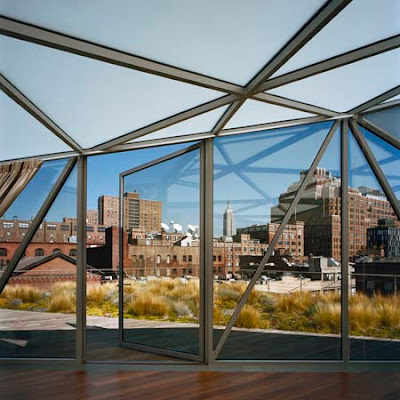
:: images via Dezeen
Via Dwell, the first LEED-Gold planned commerical building in San Francisco – with a dual pv/green roof… by Matarozzi/Pelsinger Builders.
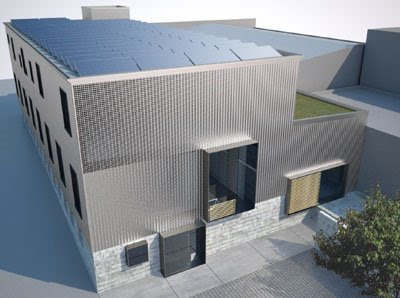
:: image via Dwell
Via Jetson Green, the very vegetated: (and significantly softer rendering of the) “…Zero Energy Idea House located at Bass Cove near Bellevue, Washington.”
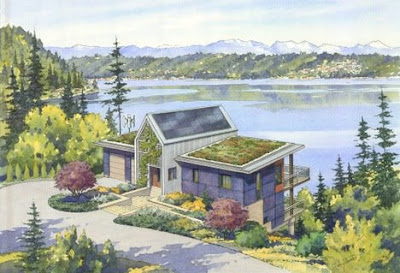
:: image via Jetson Green
Via BDonline, some roof terrace amidst the glass in a Glasgow development…
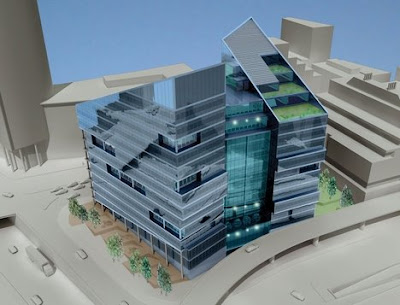
:: image via BDonline
And a very green earth-sheltered ZedFactory house in Bath, UK by Bill Dunster – via BDonline… an interesting quote on this net-positive house, from homeowner Andrew Mercer: “If we aren’t off-grid within 12 months, the council will ask us to pull the house down, which shows how committed we are.”
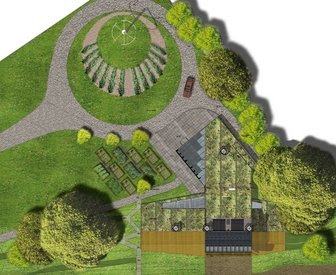
:: images via BDonline
And an odd little sliver of grass atop this urban example in this UK development…
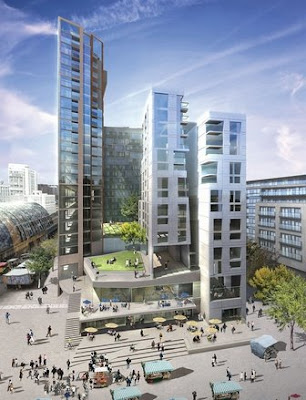
:: image via BDonline
Finally… the reason I dislike green roof tray systems… Great house, bad roof – Concourse E in Atlanta via Jetson Green.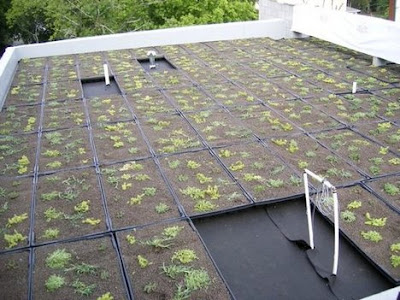
:: image via Jetson Green
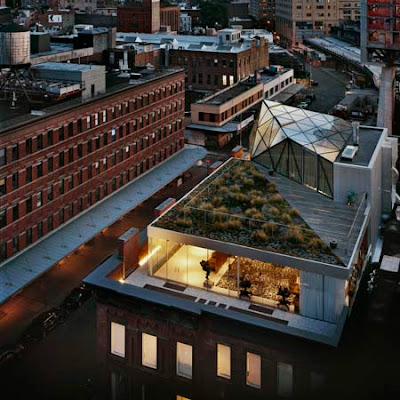
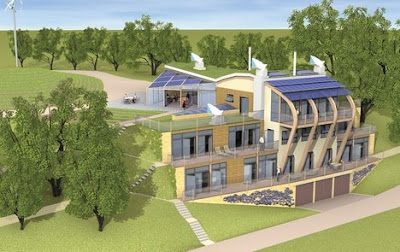
For those of us who don’t
know , what is bad about the tray system ?
Tray systems – I give them a bad time… I will start by saying in some cases, they are the perfect fit – where we have lots of rooftop equipment/penetrations, or are planning on a temporary roof situation. Containers make a lot of sense for rooftop agriculture as well.
On the down side, my short list of peeves…
1. Cost – they are prohibitively expensive, and are often used unnecessarily, because it’s a product… not a landscape.
2. Extra Material – we don’t need to create more unnecessary material in sustainable designs – and the plastic/metal whatever is used is just more stuff that’s made…
3. Ecological function – instead of creating a contiguous landscape where water, and nutrients – and plant roots can flow laterally, the systems create multiple bathtubs that are less adaptable to conditions.
4. Aesthetics… they look bad, for the most part, the edges, seams, gaps don’t ever fill in – or take a long time to. There are some systems that try to eliminate this.
5. Roof life – continuous cover is the way to protect rooftops – and there are typically many gaps and openings (see above) at penetrations and corners, that leave exposed membrane, which is susceptible to UV and heat flux – thus damage. 100% complete coverage is the only way to insure that this is providing full protection.
Frankly, it comes down to it works less and it costs more. I’ve used it on selected projects – but the running tally is 21 times out of 22 ecoroof projects I’ve designed – a custom, integral system, is the perfect fit – at the perfect cost.